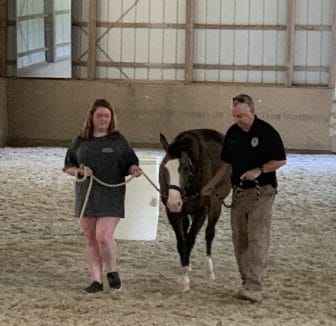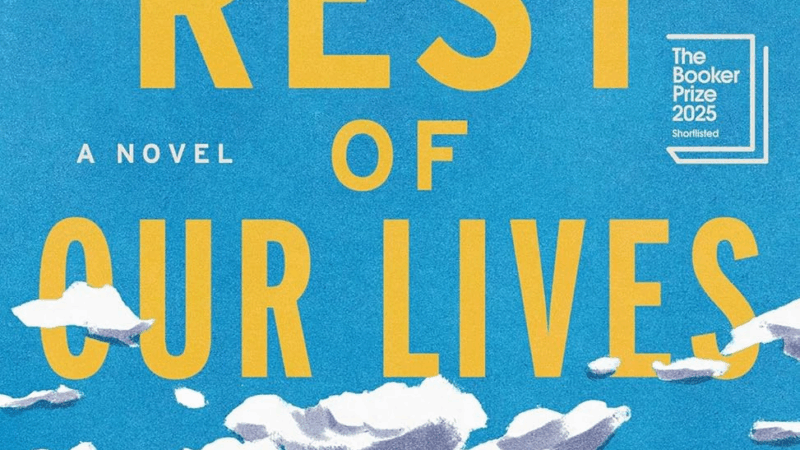Program Uses ‘Horse Sense’ to Improve Communication with Police
The video begins with dramatic police footage of an incident from a few years ago. An officer questions a young boy and asks for his ID, then proceeds to handcuff him. The boy, who has autism, appears confused and screams loudly as he is pushed to the ground. The officer later says he thought the boy was using drugs.
Advocates say the incident exemplifies what can happen when law enforcement does not understand or know how to adapt to a person’s disability or difference. For kids and adults who have a communicative disorder like autism, interactions with police can escalate quickly.
The video is part of a larger training program developed by the Red Barn, an equestrian-focused nonprofit based in Leeds. It includes educational materials for law enforcement, as well as parents and teachers, on ways to improve communication between police and kids who have communicative disorders, and it uses horses to guide the way.
Recognizing a Difference
The video features interviews with experts like Temple Grandin, as well as parents and kids who talk about how to recognize the signs someone may have a communicative disorder, such as autism or Tourette syndrome.
“Part of what we hope the video does is to give the officer an overview of some of those things to look for,” says Joy O’Neal, executive director of the Red Barn.
O’Neal says there are behavioral clues, like avoiding eye contact, or stimming, a type of self-stimulation when someone repeats a movement or sound.
Bryan Kelley, a school resource officer with the Mountain Brook Police Department, says 30 years ago, he did not know anything about disorders such as autism. Today, he says there is a greater awareness and more training opportunities for police and first responders. Still, Kelley says police officers are generally trained to respond and act quickly.
“Bluntly, when somebody runs from the police, the police chase them,” Kelley says.
And in the moment, he says it can be difficult to know whether someone has special needs.
“It’s complicated when you deal with someone and you don’t know why they’re behaving in an odd manner,” Kelley says. “Maybe it’s a disability, but maybe it’s drugs, maybe it’s something else.”
Horse Sense for All
The training program not only includes tips on recognizing a person’s communicative differences, it also teaches different ways to communicate, how to approach someone and what kind of questions to ask. This is where experts turn to horses.
The Red Barn regularly uses horses to work with kids who have physical and emotional disabilities. They now also offer in-person trainings for police and invite them to participate in activities with students at the barn.
During one of these activities, students work with Officer Kelley to lead a horse through an obstacle course, but they cannot talk to each other.
For students like Kiersten Charping of Springville, the activity is a challenge.

Red Barn
Officer Kelley and Kiersten Charming tandem lead a horse through an obstacle course, without talking to one another.
“You have to realize your body language, because, like, they’re horses and they can’t speak,” she says.
At the end of the activity, students debrief with Officer Kelley to discuss what they learned and how they feel. Charping, who says she sometimes feels anxious and has trust issues, says it is fun and she enjoys working with the horses.
Red Barn director Joy O’Neal says the exercise is a chance for students to get to know police officers in a comfortable setting. And she says working with horses helps everyone take a step back and slow down.
“No matter how strong you are, you can’t overpower a horse with your own strength,” O’Neal says. “It has to be done through cooperation and understanding.”
A Greater Need
To create this training program, called Horse Sense for All, the Red Barn worked with a group based in California called the JAYC Foundation. For years, the JAYC Foundation has used horses to work with trauma victims and law enforcement. One of the founders is Jaycee Dugard, who spent years in captivity before police found her. Dugard says when law enforcement questioned her, she felt intimidated.
“Even though I didn’t have a communication disorder or a learning disability, it really felt like I had a lot of trouble communicating with officers when I was first found,” she says.
The new training program is focused on improving communication between police and kids with communicative disorders, but ultimately, both groups hope it helps improve interactions with all people, whether they are living with trauma, mental illness, or autism.
Top Instagram reels from Goats and Soda in 2025: Plumpy’Nut, aid cuts, soccer grannies
Our most-viewed Instagram videos include reports from a Rhode Island factory that makes special food for malnourished children and from a tournament for soccer-playing "grannies."
‘The Rest of Our Lives’ takes readers on a midlife crisis road trip
America's literary highways may be plenty crowded with middle-aged runaways fleeing lives that increasingly feel like a bad fit. But Ben Markovits adds a moving tale to the collection.
Hunker down with these 13 mysteries and thrillers from 2025
Mysteries and thrillers are enjoyable no matter the season, but there's something extra satisfying about curling up in the winter with a warm drink and an all-engrossing read. Here's what we suggest.
Should the U.S. model its vaccine policy on Denmark’s? Experts say we’re nothing alike
The Trump administration wants to revamp U.S. childhood vaccination recommendations to align with some other peer nations, including one tiny country in northern Europe.
Marijuana rescheduling would bring some immediate changes, but others will take time
President Trump set the process in motion to ease federal restrictions on marijuana. But his order doesn't automatically revoke laws targeting marijuana, which remains illegal to transport over state lines.
The cultural works becoming public domain in 2026, from Betty Boop to Nancy Drew
The original Betty Boop, the first four Nancy Drew books and Greta Garbo's first talkie are among the many works from 1930 that will be free to use, share and remake starting on Jan. 1.







